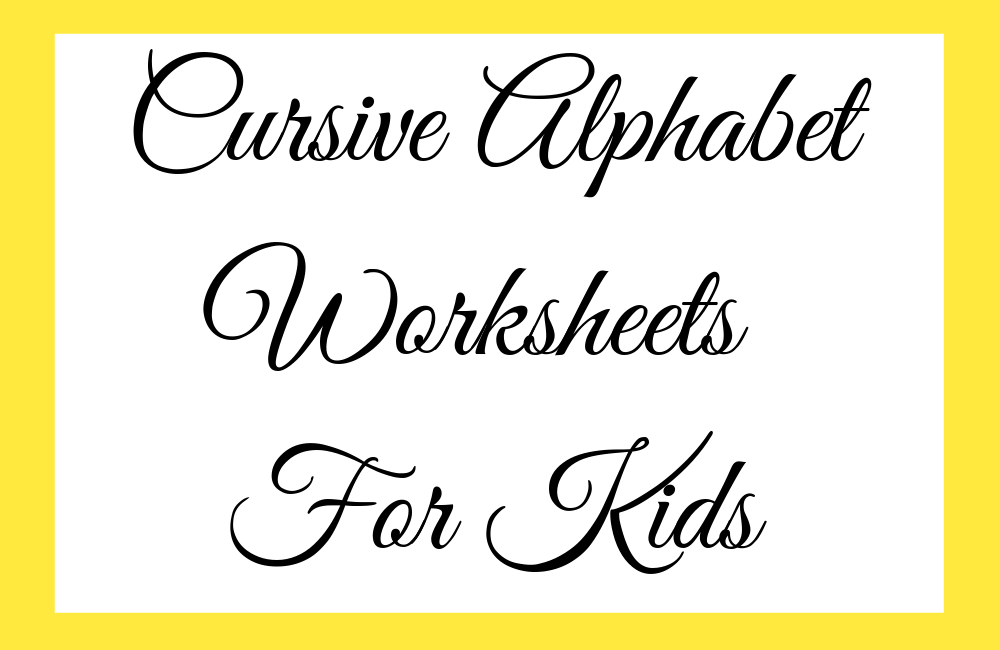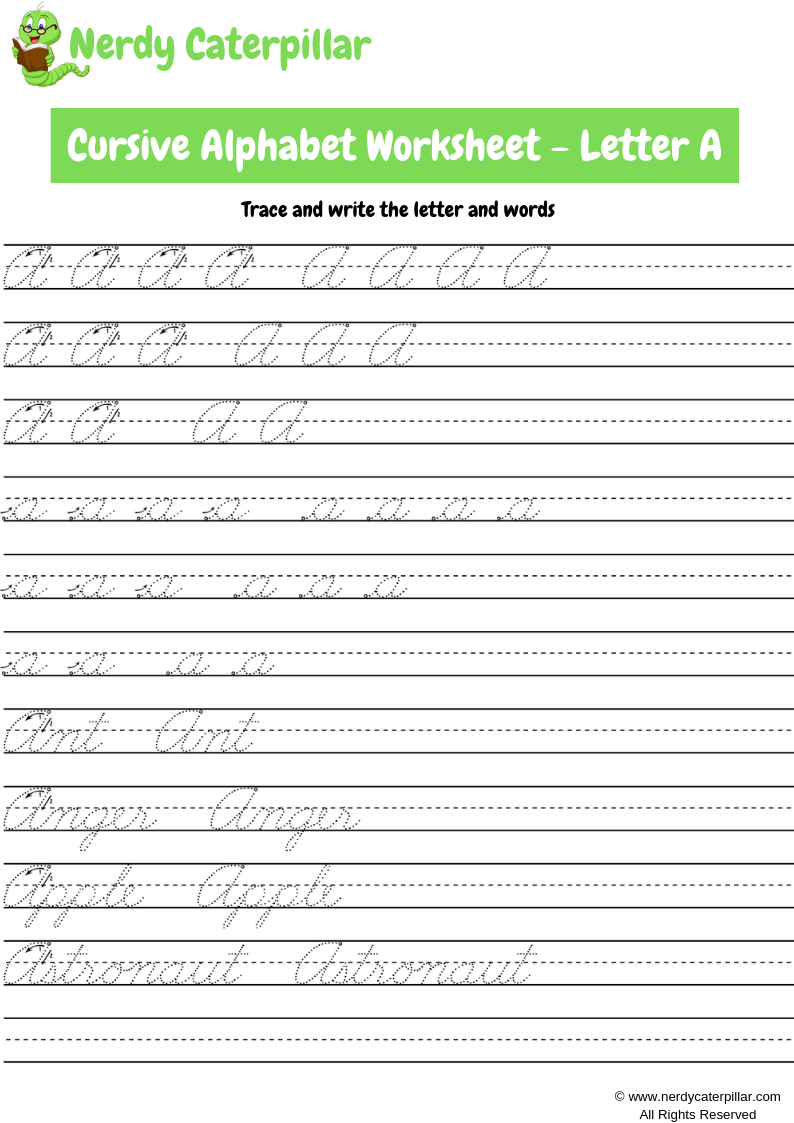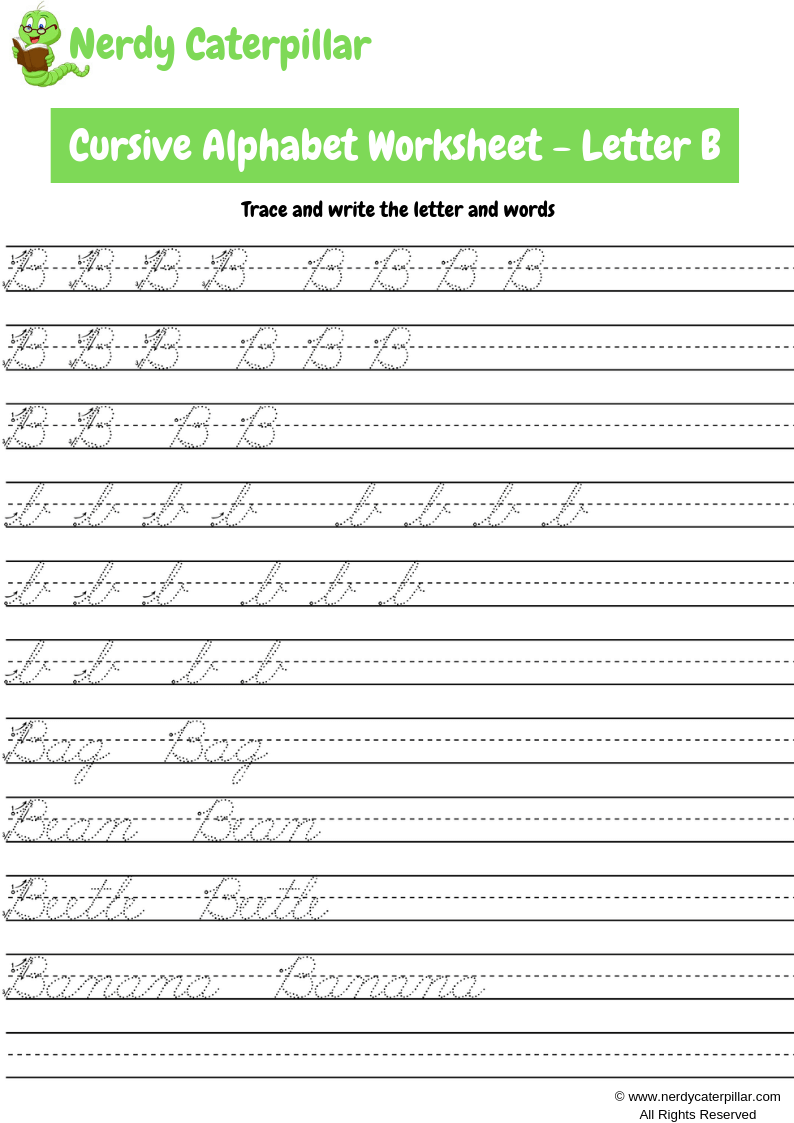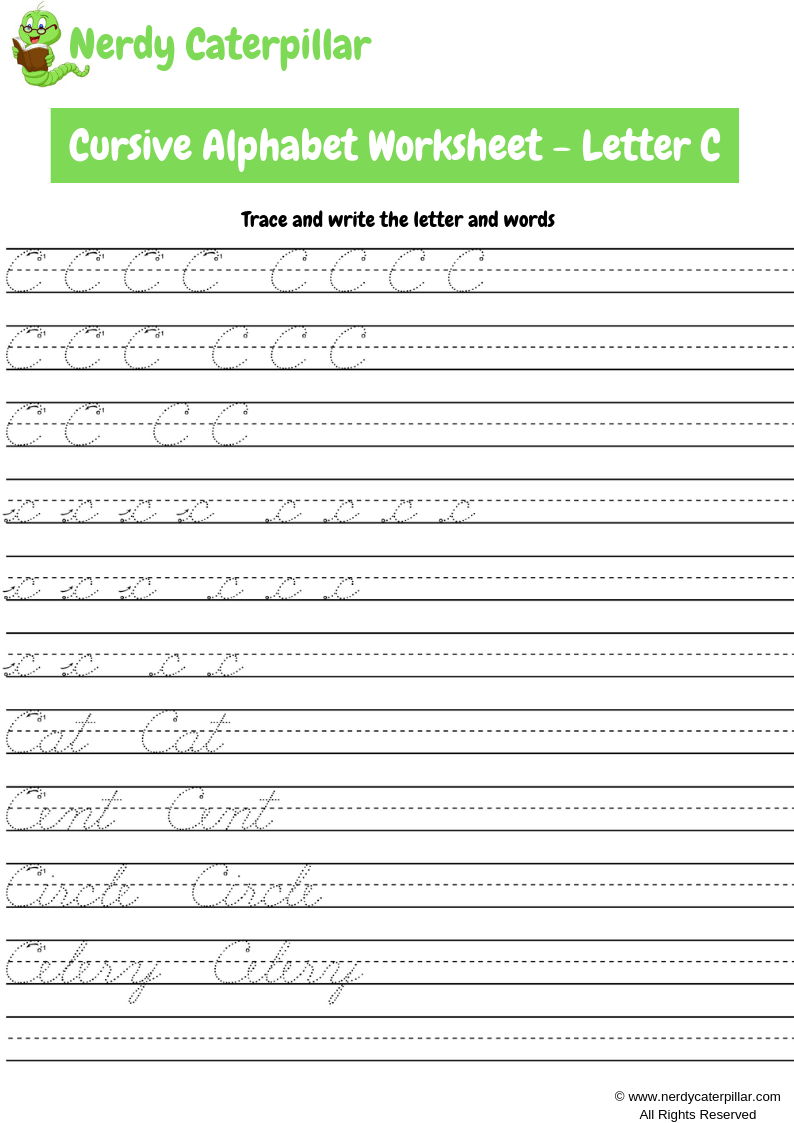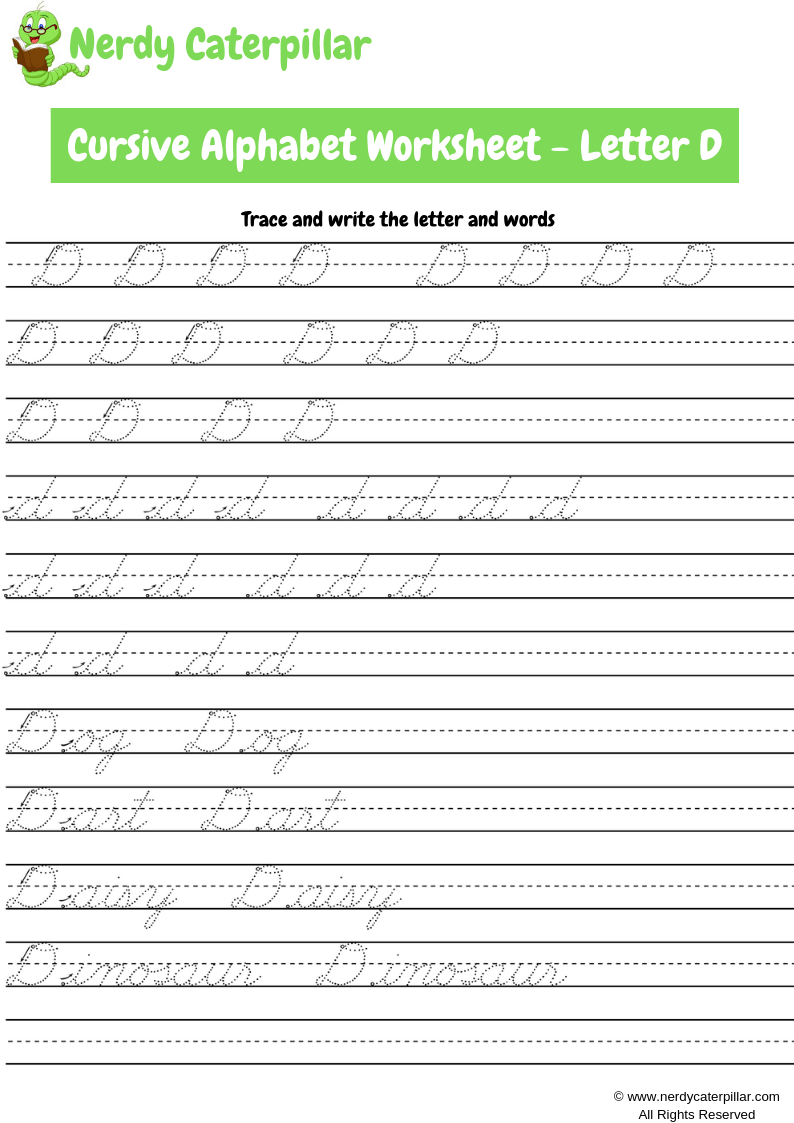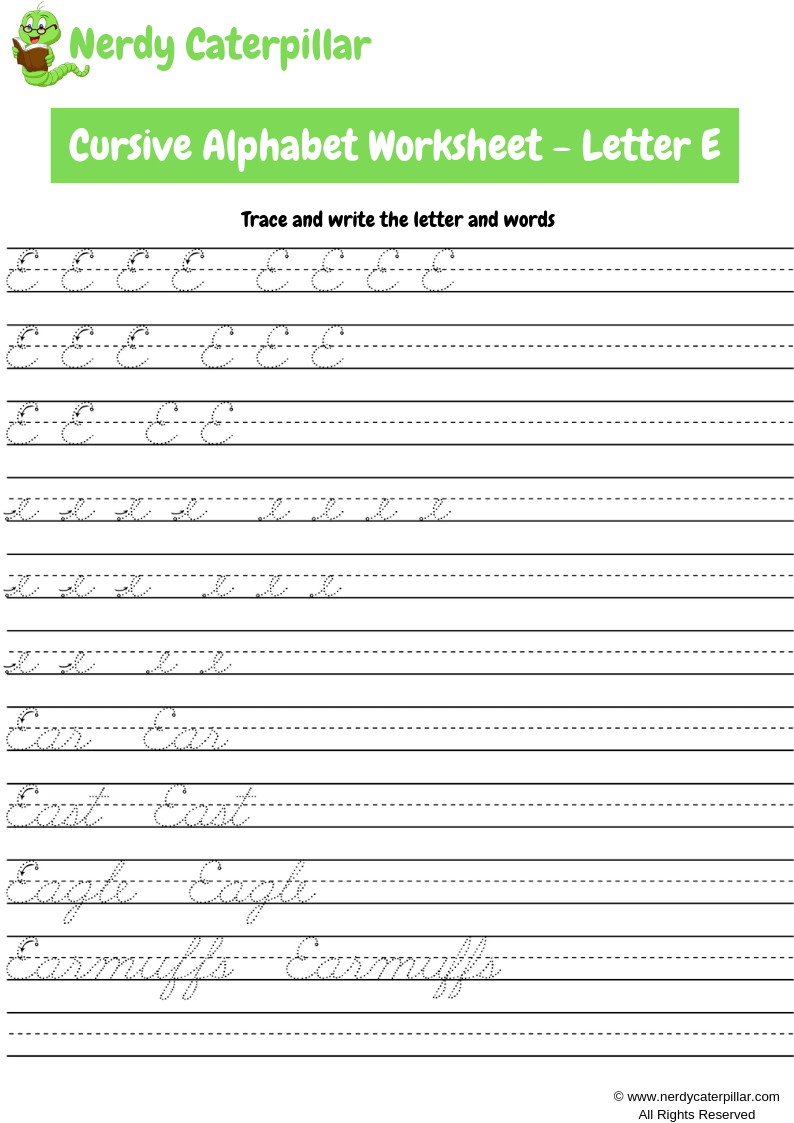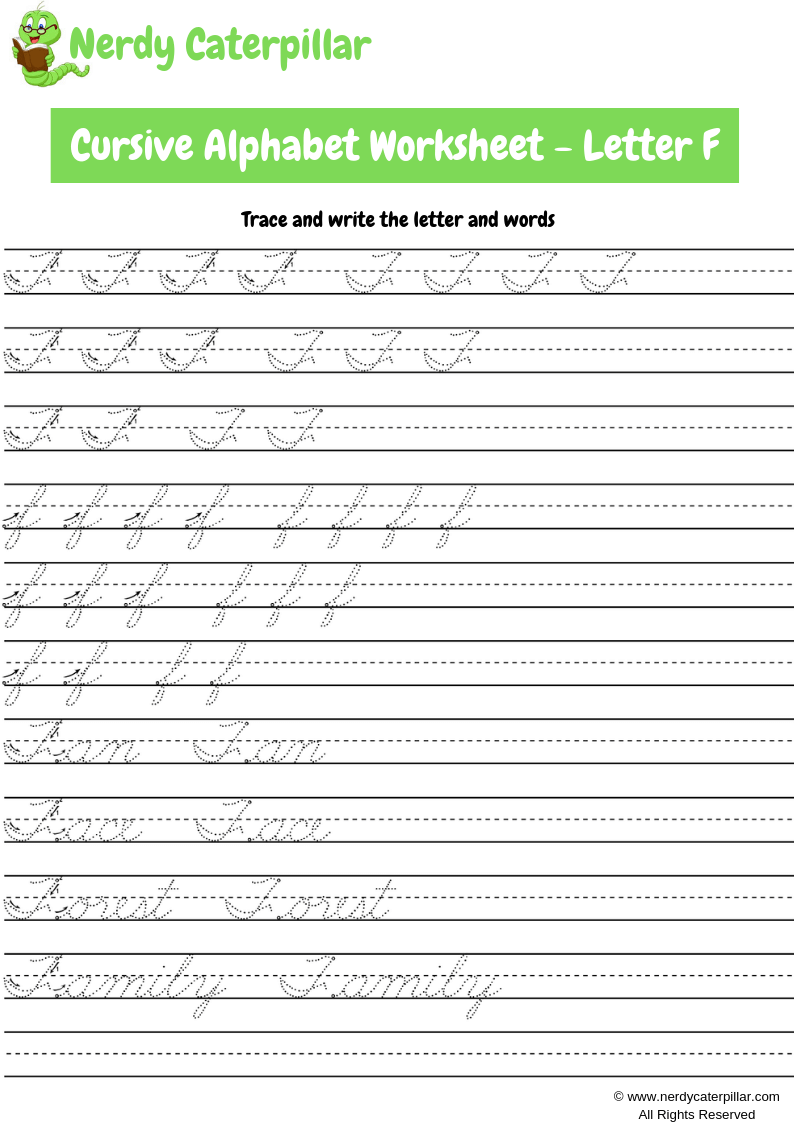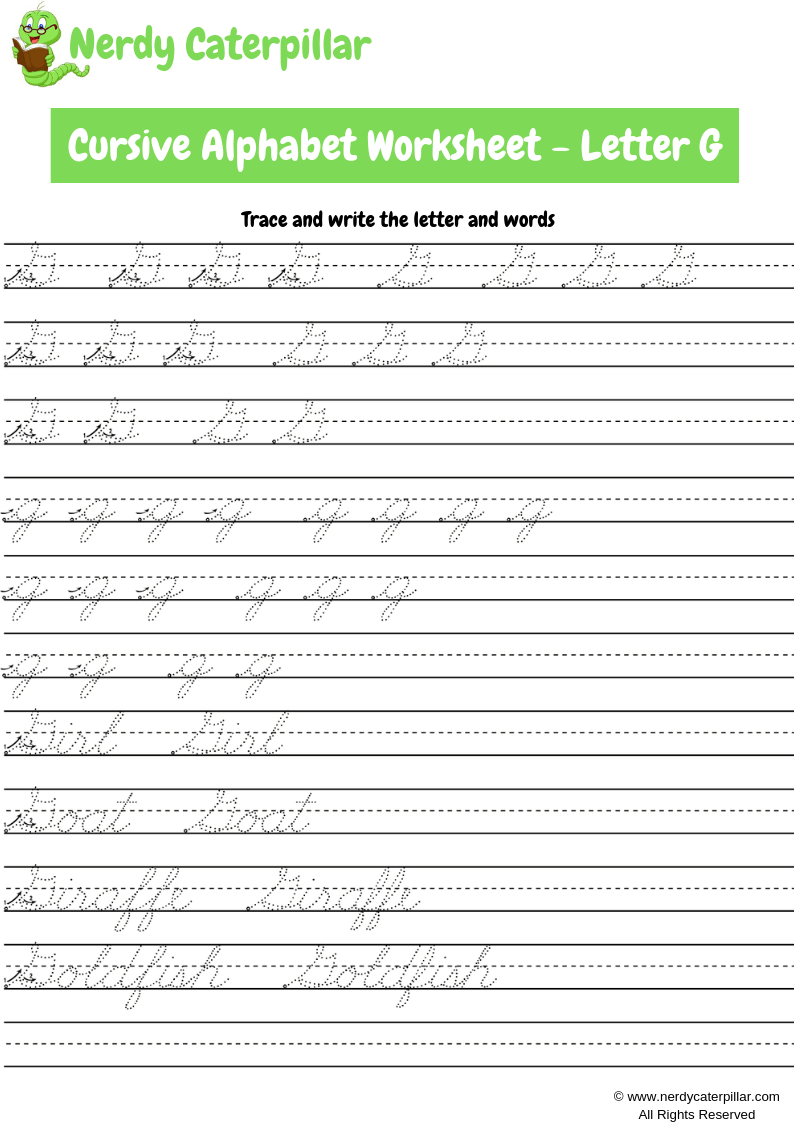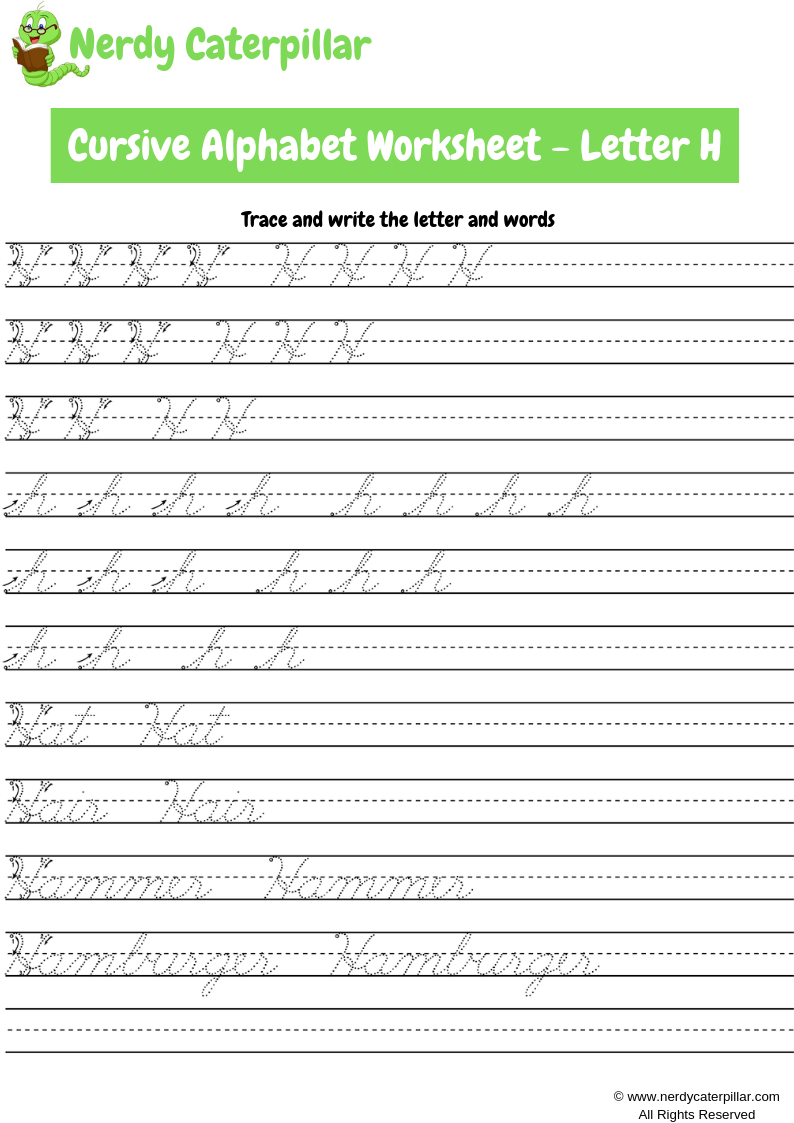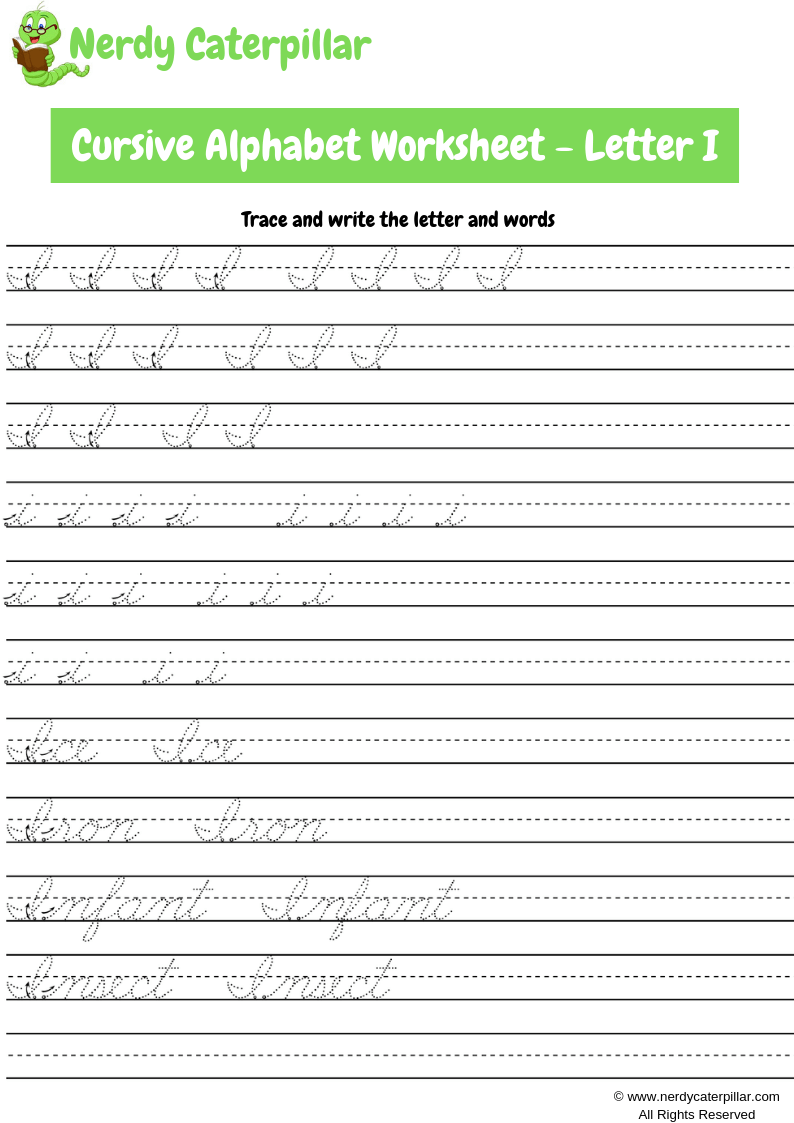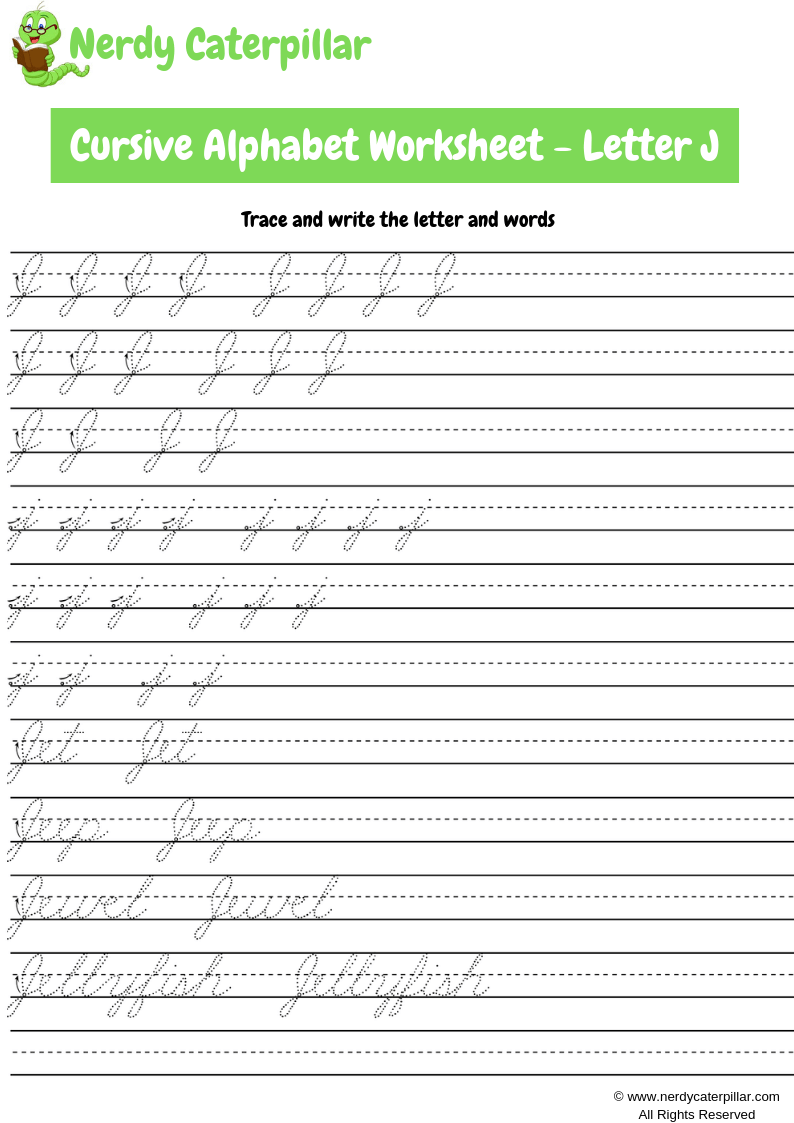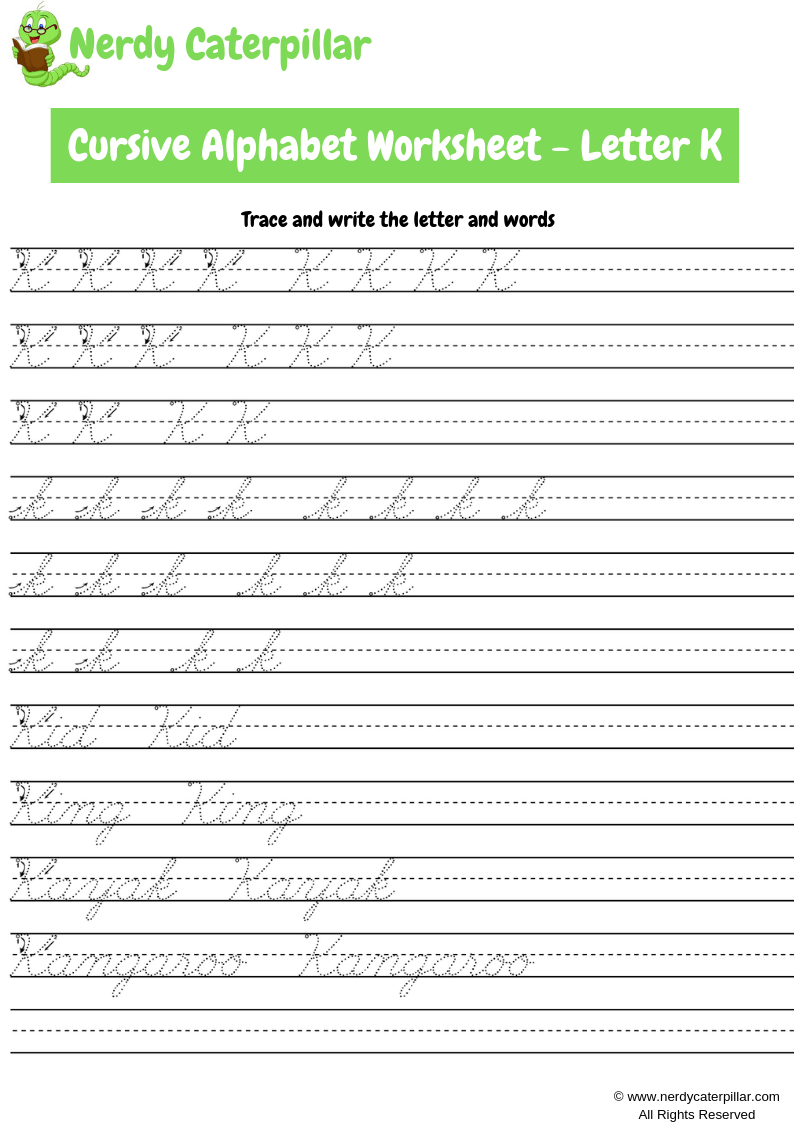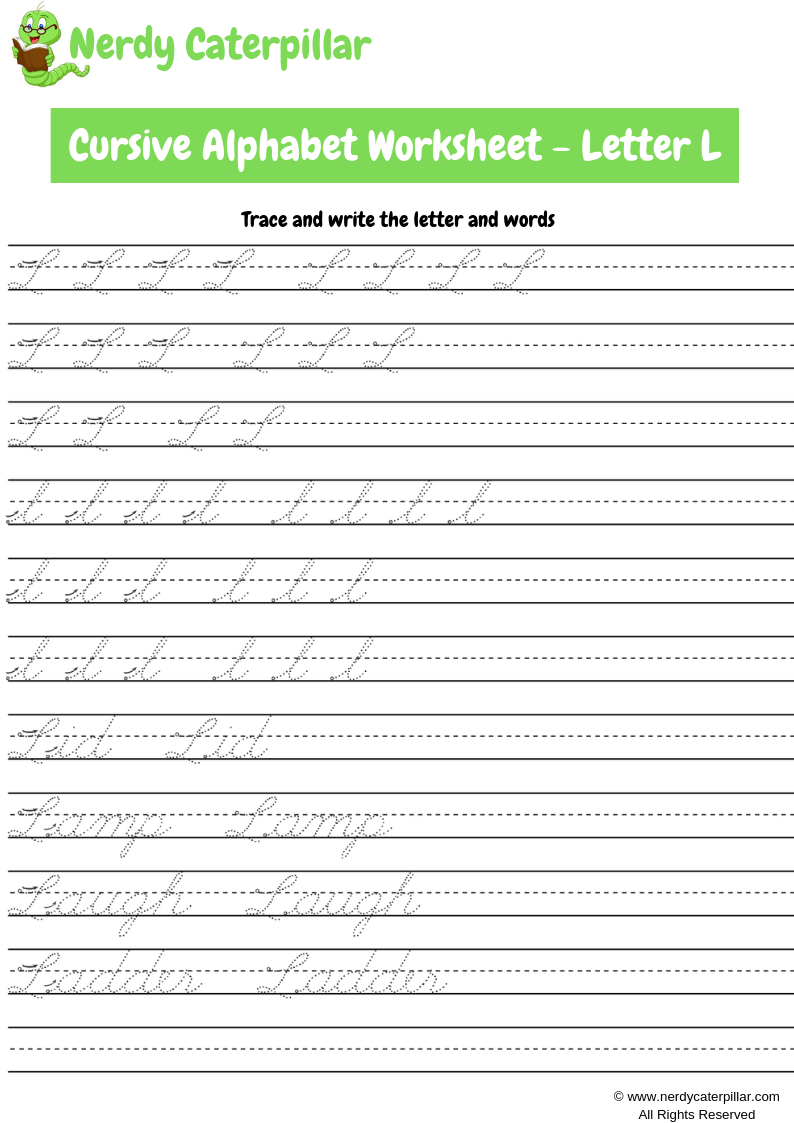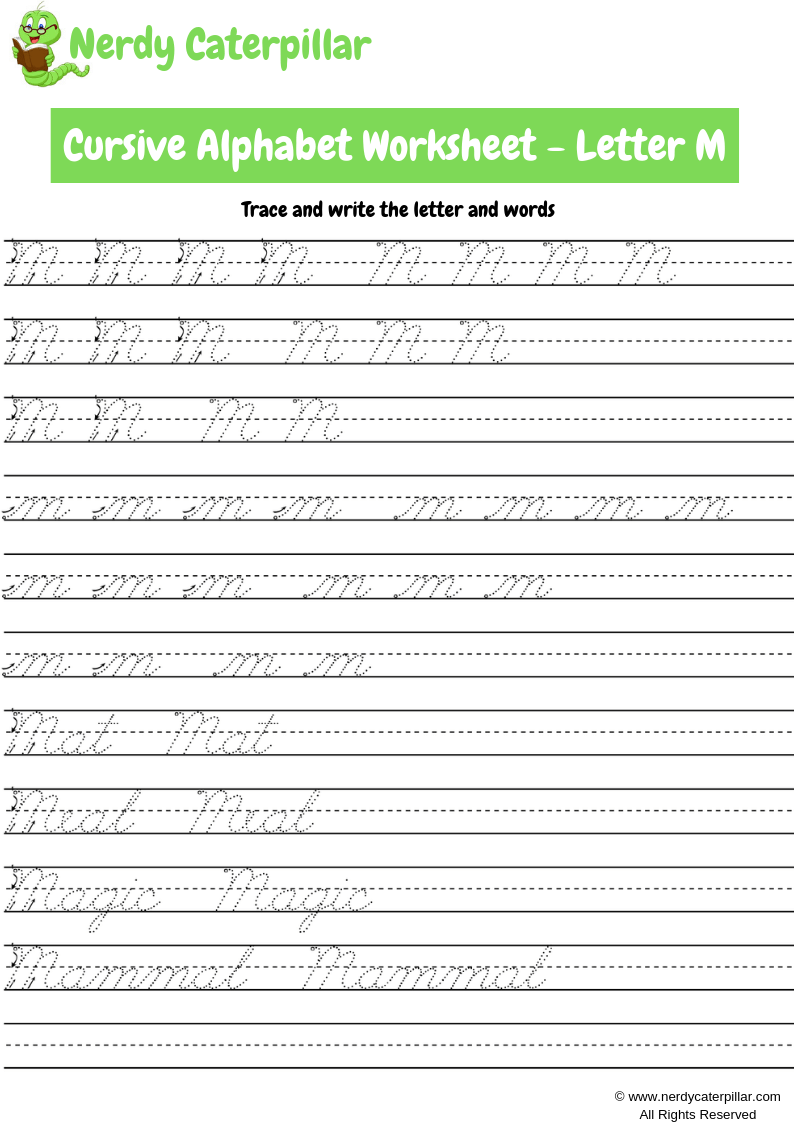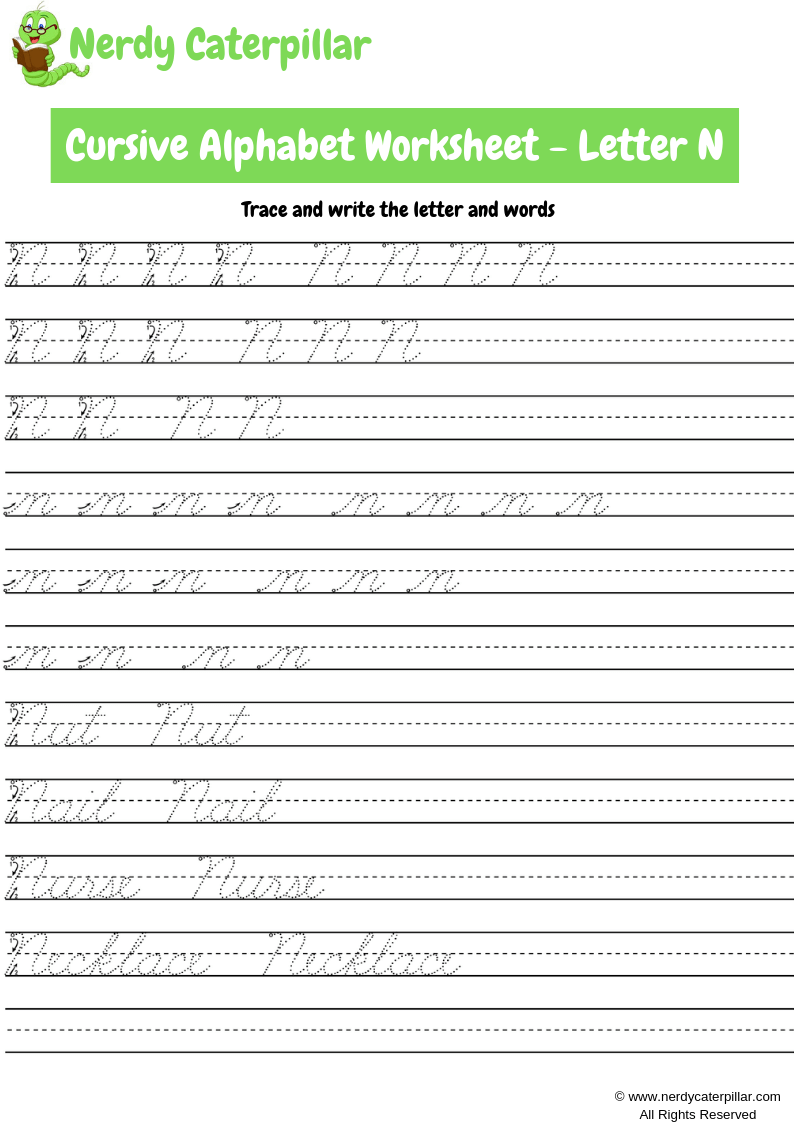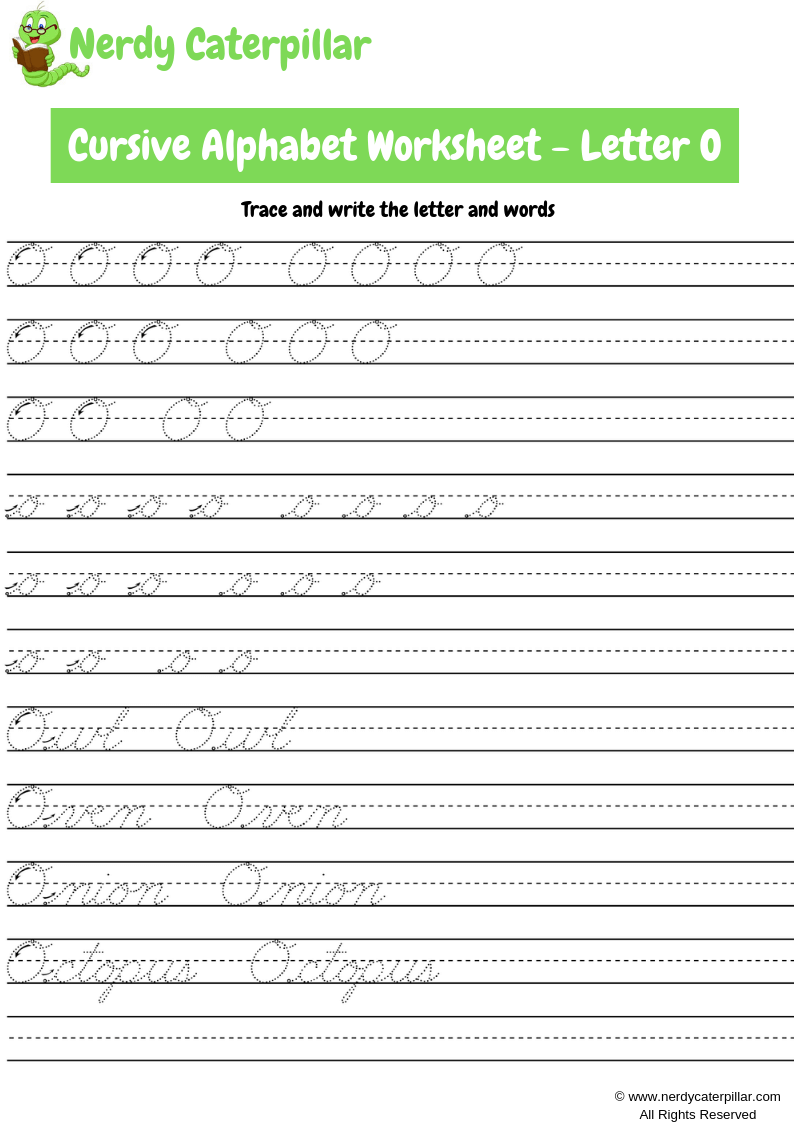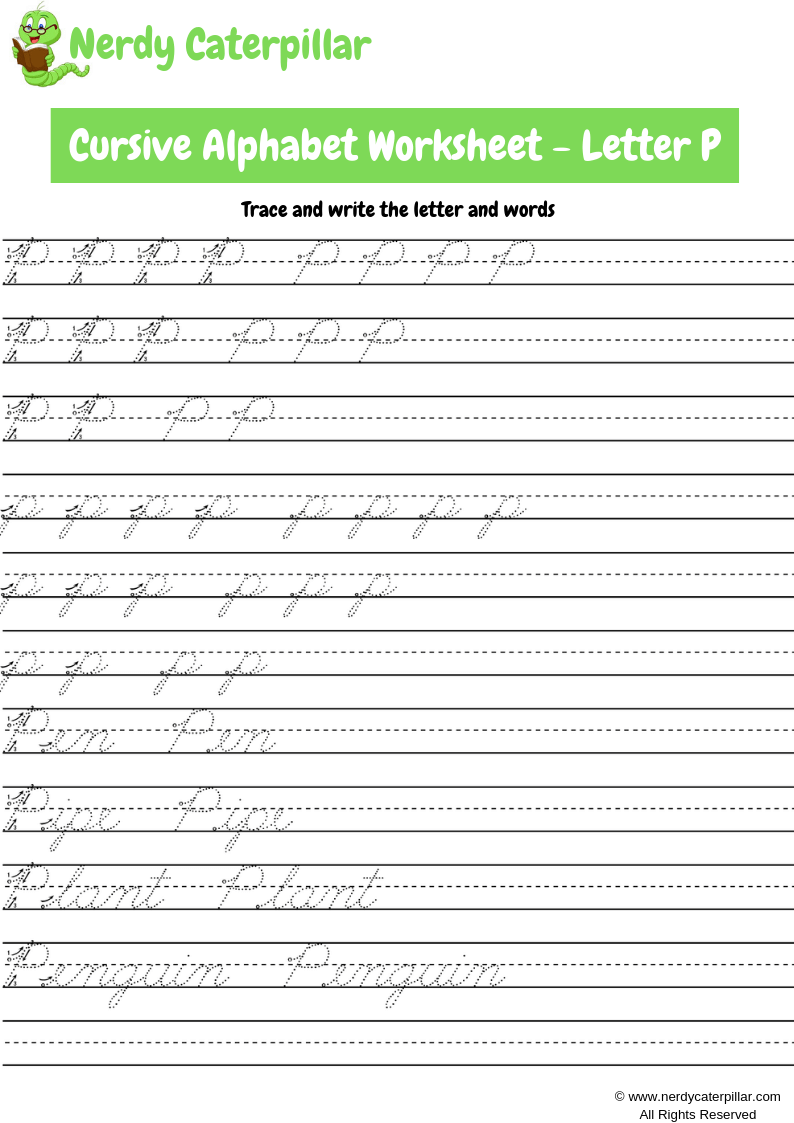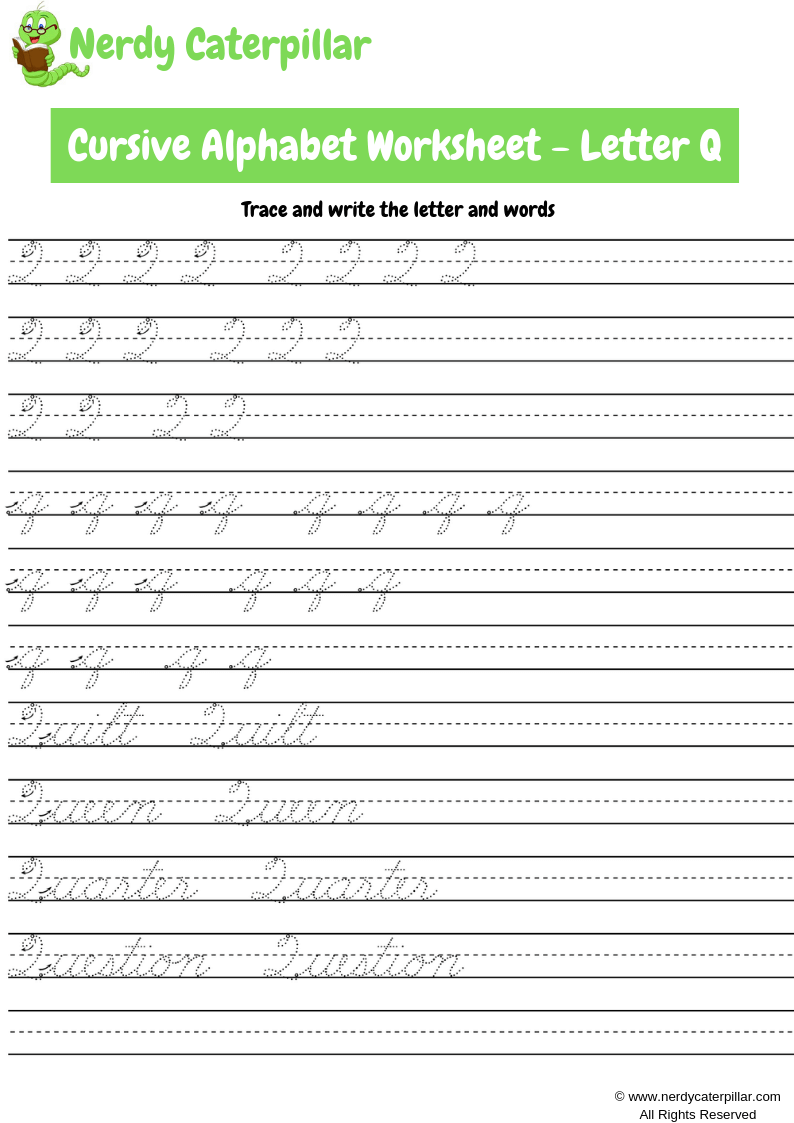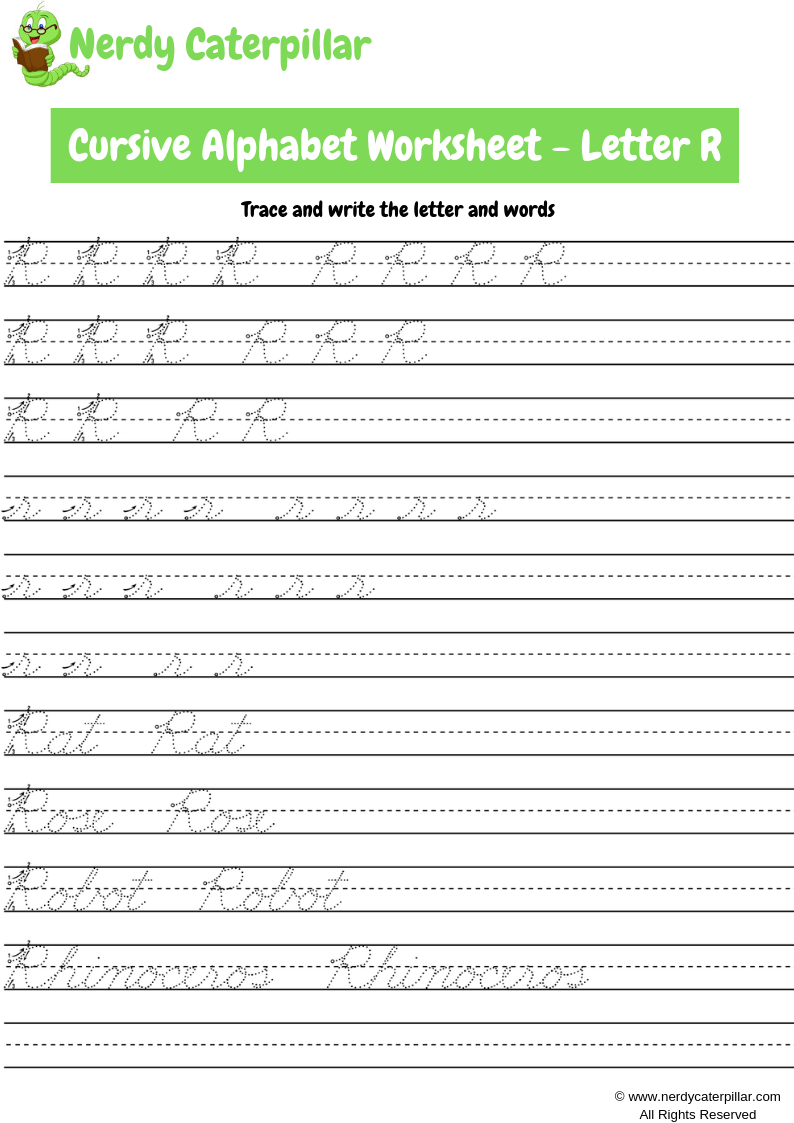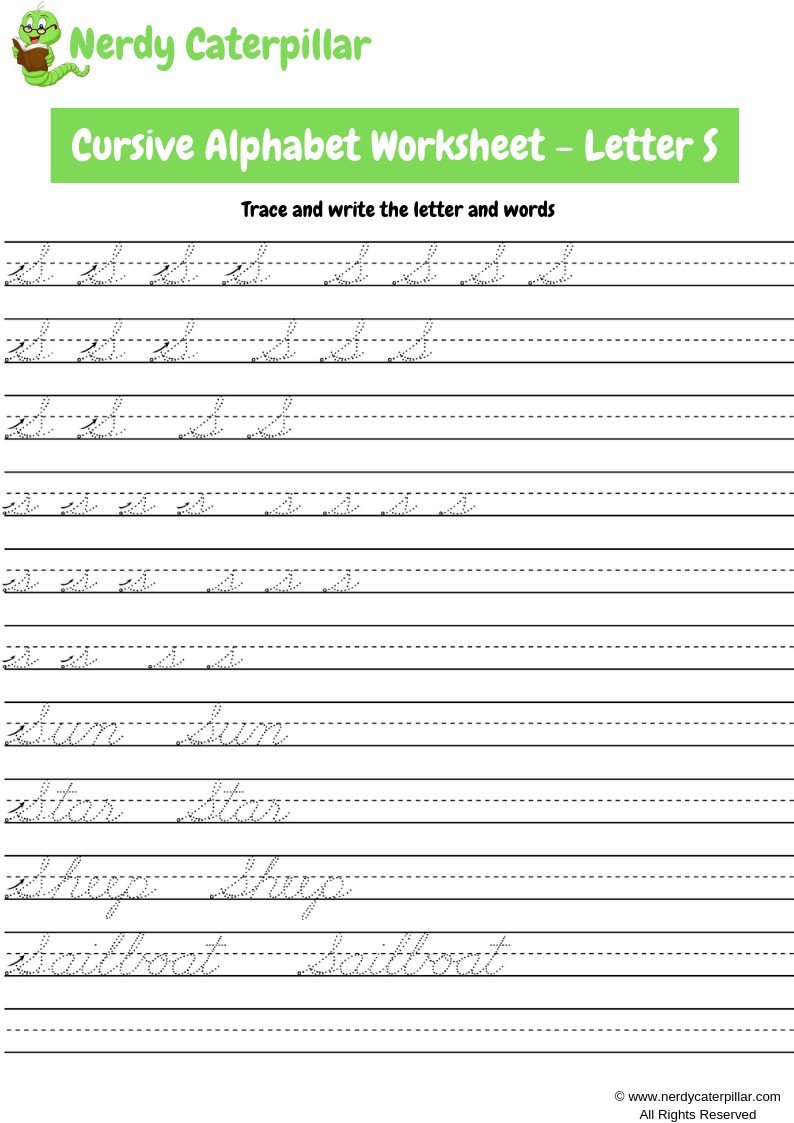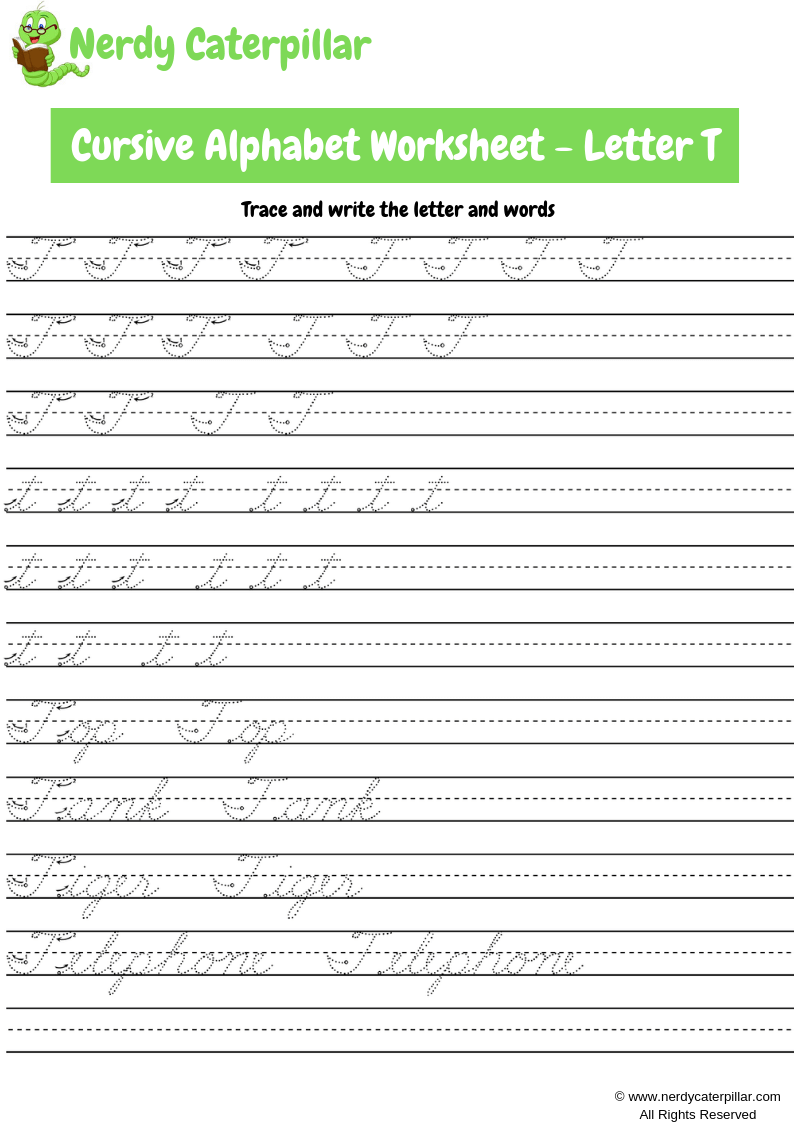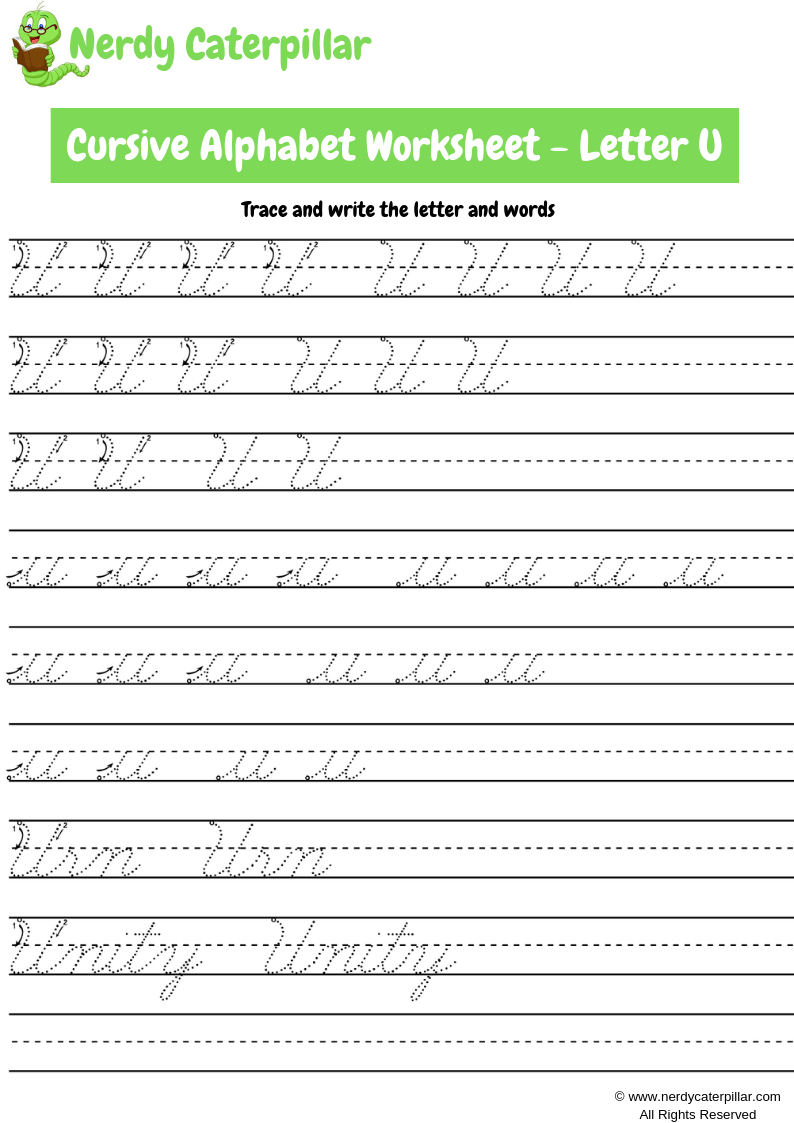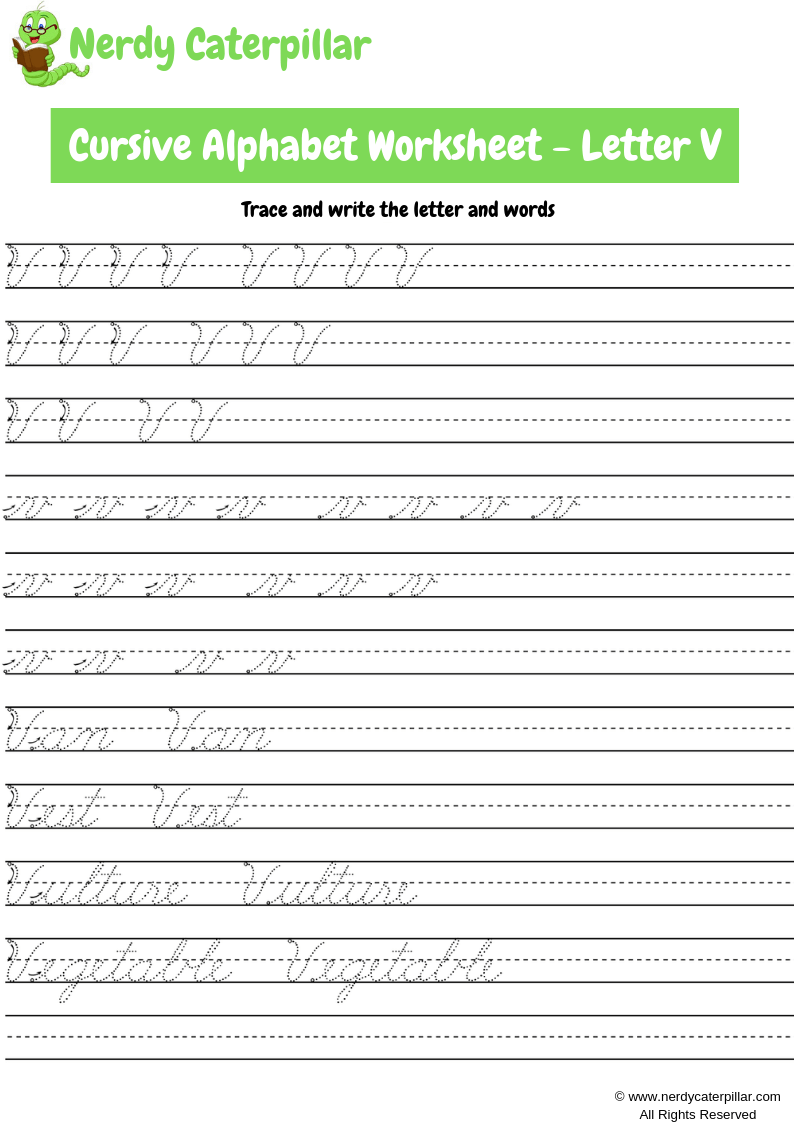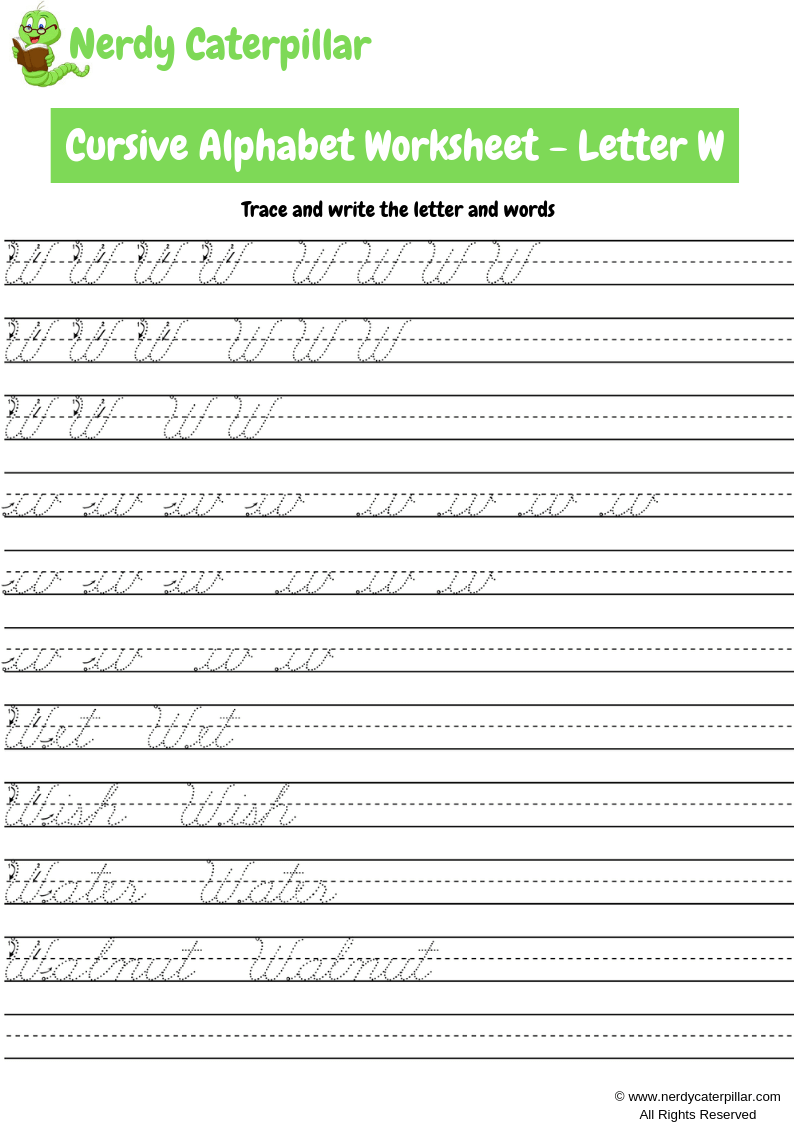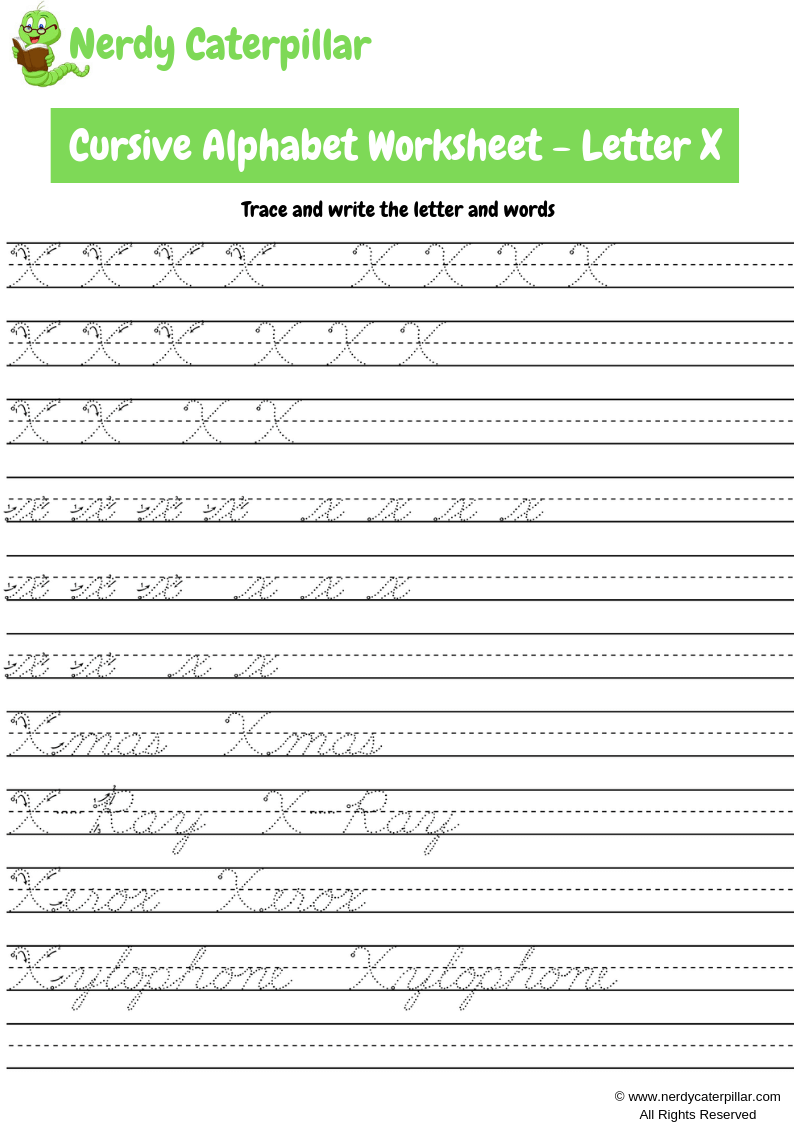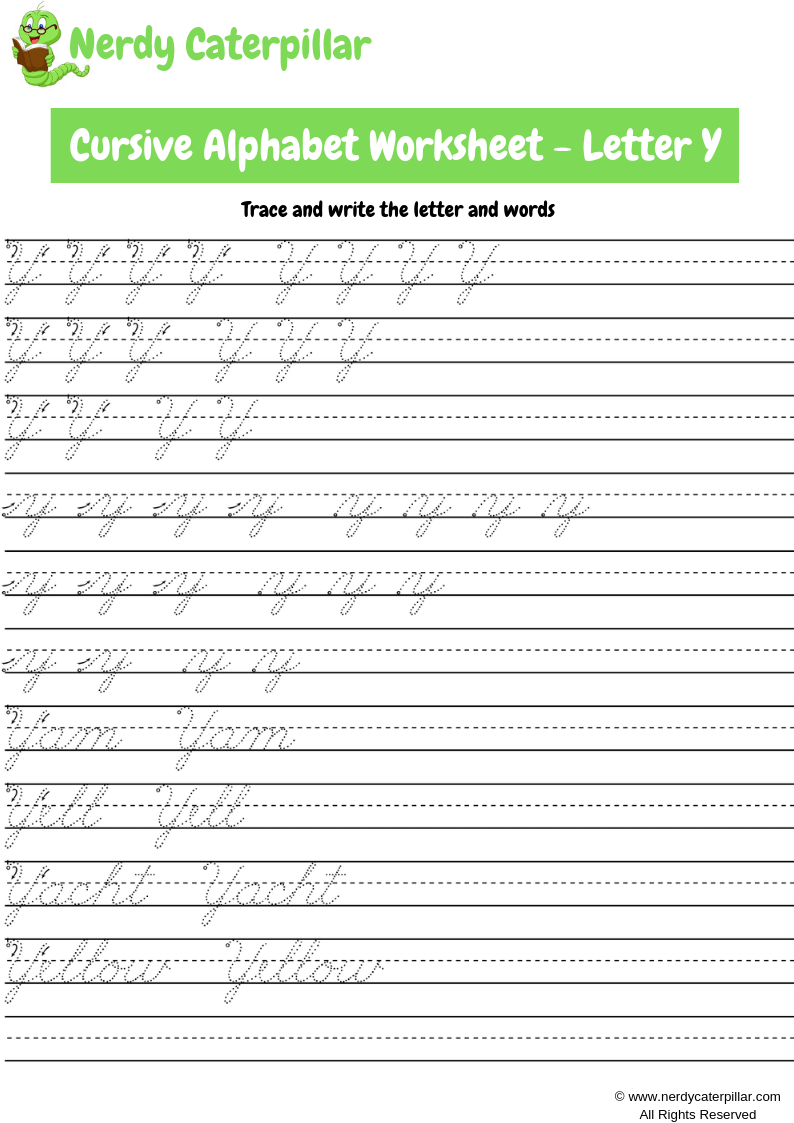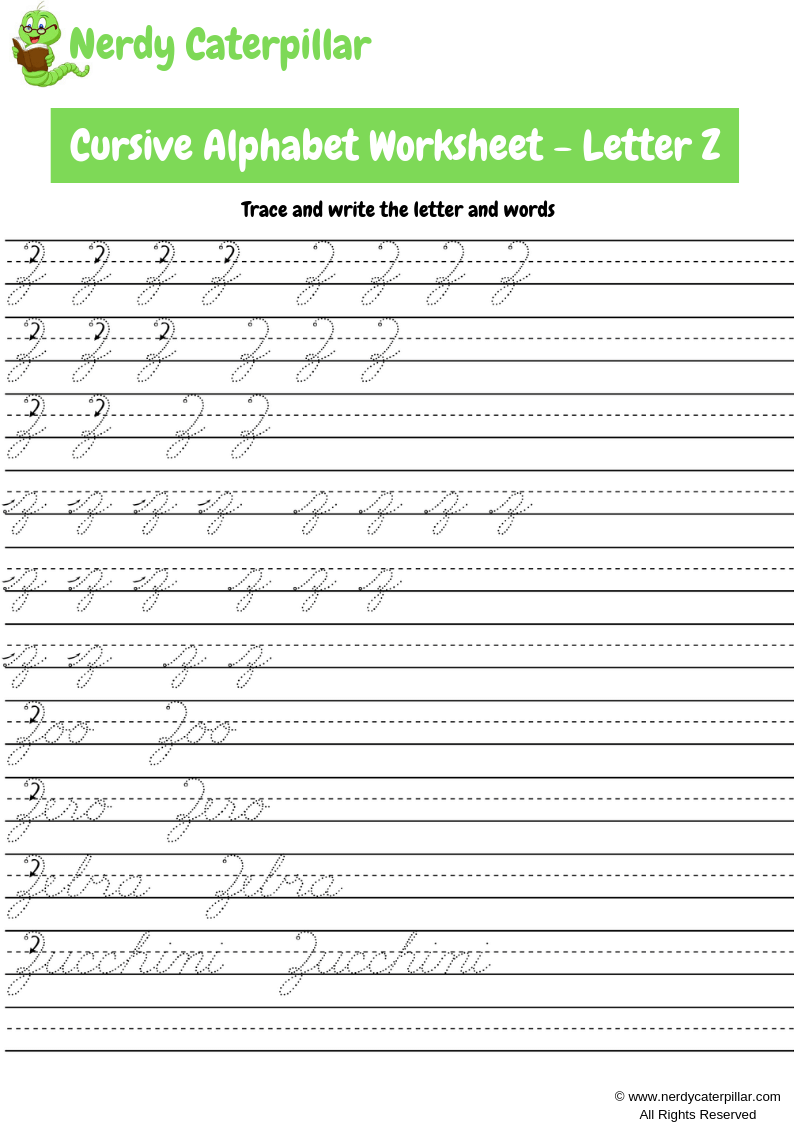Cursive, also known as joined-up or longhand is a style of penmanship or handwriting in which letters are joined together in a flowing manner. The purpose of cursive is to make the writing faster and of course prettier. But that’s not all! Cursive is also a foundation skill as kids need handwriting practice from second grade onwards to build their cognitive abilities. One might feel that cursive is a bit old fashioned as it was popular in the era when people communicated via letters. But believe you me, cursive is vital for kids’ success even today when they have technology at their fingertips. Keeping that in mind, we’ve got our little readers a collection of cursive alphabet worksheets. But before that, let’s take a look at some benefits of teaching cursive to children.
Cursive Handwriting Facts:
-
Types Of Cursive:
There are two types of cursive handwriting. One is fully or continuous cursive in which is every letter is joined and you cannot lift the pen off the sheet until you’ve written the word. The second type is part cursive, in which most, but not all letters are joined.
-
Helps Reach Fluency Faster:
The main benefit of cursive handwriting, as mentioned above, is learning to write fast. And this is the main reason why most schools include cursive handwriting in a child’s syllabus right from the start. It’s believed that if kids learn to print first and then join up, they will understand the concept of letter fast.
-
Cursive Is Not Taught In Alphabetical Order:
Unlike alphabets, cursive handwriting isn’t taught in alphabetical order, but according to their formation. ‘A’, ‘c’, ‘e’, and ‘o’ are taught together as they are based on an anti-clockwise circle. Kids are taught just one or two joints a week so that they learn to form the letters correctly.
-
Good Posture Is Important White Learning Cursive:
Good posture is immensely important while learning cursive handwriting. While practicing cursive, kids should sit with their back straight and feet flat on the floor. Also, kids must be taught cursive handwriting on a blackboard rather than paper. The rough surface delivers strong feedback to the brain, thereby making the movements automatic with time.
-
Kids Learn Lowercase Cursive First:
Kids learn writing lowercase cursive letters first and then move to uppercase. This helps kids learn cursive skills in the most efficient, and not to forget, easiest way. Also, capitals are taught later because of their complex formations and infrequent use. However, kids learn writing cursive capitals quickly because of the simple letter style.
-
Cursive Handwriting Worksheets Truly Help:
Most importantly, cursive handwriting worksheets with arrows showing the direction of movement and dots at the starting point can be really helpful for kids. Through cursive practice worksheets, kids will even develop their style and increase the speed of their handwriting.
Cursive Handwriting Benefits:
Below mentioned are some benefits of cursive handwriting.
- Cursive handwriting improves idea generation and increases retention.
- Cursive improves the confidence of a child in other schoolwork and assignments.
- Cursive helps kids who struggled with printing. It’s like a fresh start for them.
A To Z Cursive Alphabet Worksheets
So kids, if you are looking to practice cursive handwriting, you’ve landed at the right place. From A to Z, Nerdy Caterpillar has got you Cursive worksheets of all the letters in the alphabet to help you master this tricky penmanship.
So go ahead and master the cursive penmanship today by downloading and printing out all the cursive alphabet worksheets. Feel free to print out all these cursive alphabet worksheets, but only for non-commercial or private uses. We will be updating the site with more such cursive worksheets. So stay tuned with us!
You May Also Like:
- Lowercase Bubble Letters Printable
- Bubble Letters Printable
- 25 Free Kindergarten Math Worksheets Printable

